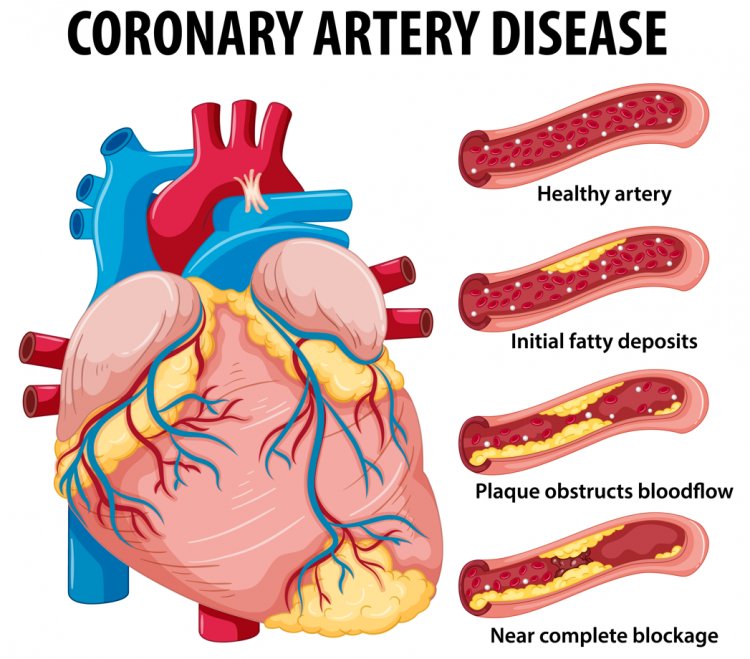Guarding Your Arteries: Preventing and Treating Peripheral Artery Disease
Peripheral Artery Disease (PAD), also known as peripheral vascular disease, is a condition characterized by narrowed arteries that reduce blood flow to the limbs, particularly the legs. This narrowing is primarily caused by atherosclerosis, a buildup of plaque (composed of cholesterol, fatty substances, cellular waste products, calcium, and fibrin) within the arterial walls. As the arteries narrow, blood flow to the limbs becomes restricted, leading to various symptoms and potentially severe complications.

Symptoms
The symptoms of PAD can vary in severity and often depend on the extent of arterial blockage. Common symptoms include:
Intermittent Claudication
Pain, cramping, weakness, or fatigue in the muscles of the legs or hips during physical activity, which typically improves with rest.
Numbness or Weakness
Reduced sensation or muscle strength in the affected limbs, often noticed in the lower extremities.
Coolness
The affected limb may feel cooler to the touch compared to the rest of the body due to reduced blood flow.
Skin Changes
Skin on the legs or feet may appear shiny, thin, or hairless. The toenails may grow slower, and there may be a bluish or reddish discoloration of the skin.
Non-healing Sores
Ulcers or wounds on the feet or toes that heal slowly or poorly, potentially leading to infections or tissue damage.
Causes
The primary cause of PAD is atherosclerosis, which develops over time due to various risk factors:
- Smoking: Tobacco use is the single most significant risk factor for PAD, accelerating the progression of atherosclerosis and increasing the risk of complications.
- Diabetes: High blood sugar levels can damage blood vessels and nerves, contributing to the development and progression of PAD.
- High Blood Pressure: Hypertension damages the inner lining of arteries, making them more susceptible to atherosclerosis.
- High Cholesterol: Elevated levels of LDL ("bad") cholesterol promote the buildup of plaque in arterial walls.
- Age and Family History: Advancing age and a family history of cardiovascular disease increase the likelihood of developing PAD.
Diagnosis
Diagnosing PAD involves a combination of medical history assessment, physical examination, and specialized tests, including:
- Ankle-Brachial Index (ABI): This test compares the blood pressure in the ankle with that in the arm to assess peripheral circulation. A lower ABI suggests reduced blood flow to the legs.
- Doppler Ultrasound: This non-invasive imaging technique uses sound waves to visualize blood flow in the arteries and detect any blockages.
- Angiography: Invasive imaging techniques, such as CT angiography or magnetic resonance angiography (MRA), may be used to obtain detailed images of the blood vessels and identify the location and severity of blockages.
Treatment
Management of PAD aims to alleviate symptoms, improve quality of life, and reduce the risk of complications. Treatment options include:
- Lifestyle Modifications: Quitting smoking, adopting a healthy diet low in saturated fats and high in fruits and vegetables, regular exercise (such as walking programs), and maintaining a healthy weight.
- Medications: Your doctor may prescribe medications to lower cholesterol levels, control blood pressure, prevent blood clots, and manage symptoms such as pain or discomfort.
- Minimally Invasive Procedures: Angioplasty and stenting involve inserting a balloon or stent into the affected artery to widen it and improve blood flow.
- Surgical Interventions: In severe cases where other treatments are ineffective, bypass surgery may be performed to reroute blood flow around the blocked artery.
Prevention
Preventing PAD involves addressing modifiable risk factors and adopting a heart-healthy lifestyle:
- Smoking Cessation: Quitting smoking is crucial in preventing or slowing the progression of PAD.
- Diabetes Management: Controlling blood sugar levels through diet, exercise, and medication can reduce the risk of vascular complications.
- Blood Pressure and Cholesterol Control: Managing hypertension and cholesterol levels through medication and lifestyle changes is essential for maintaining vascular health.
- Regular Physical Activity: Engaging in regular exercise improves circulation, enhances cardiovascular fitness, and reduces the risk of PAD and other cardiovascular diseases.
Disclaimer: The information provided in this article is for educational purposes only and should not be considered medical advice. If you have any health concerns or are experiencing symptoms, it is important to consult with a healthcare professional, such as a doctor or clinic, for proper diagnosis and treatment. Always seek the advice of your doctor or other qualified health provider with any questions you may have regarding a medical condition.
Hashtags: #PeripheralArteryDisease #PAD #HealthTips #MedicalAdvice
What's Your Reaction?





















